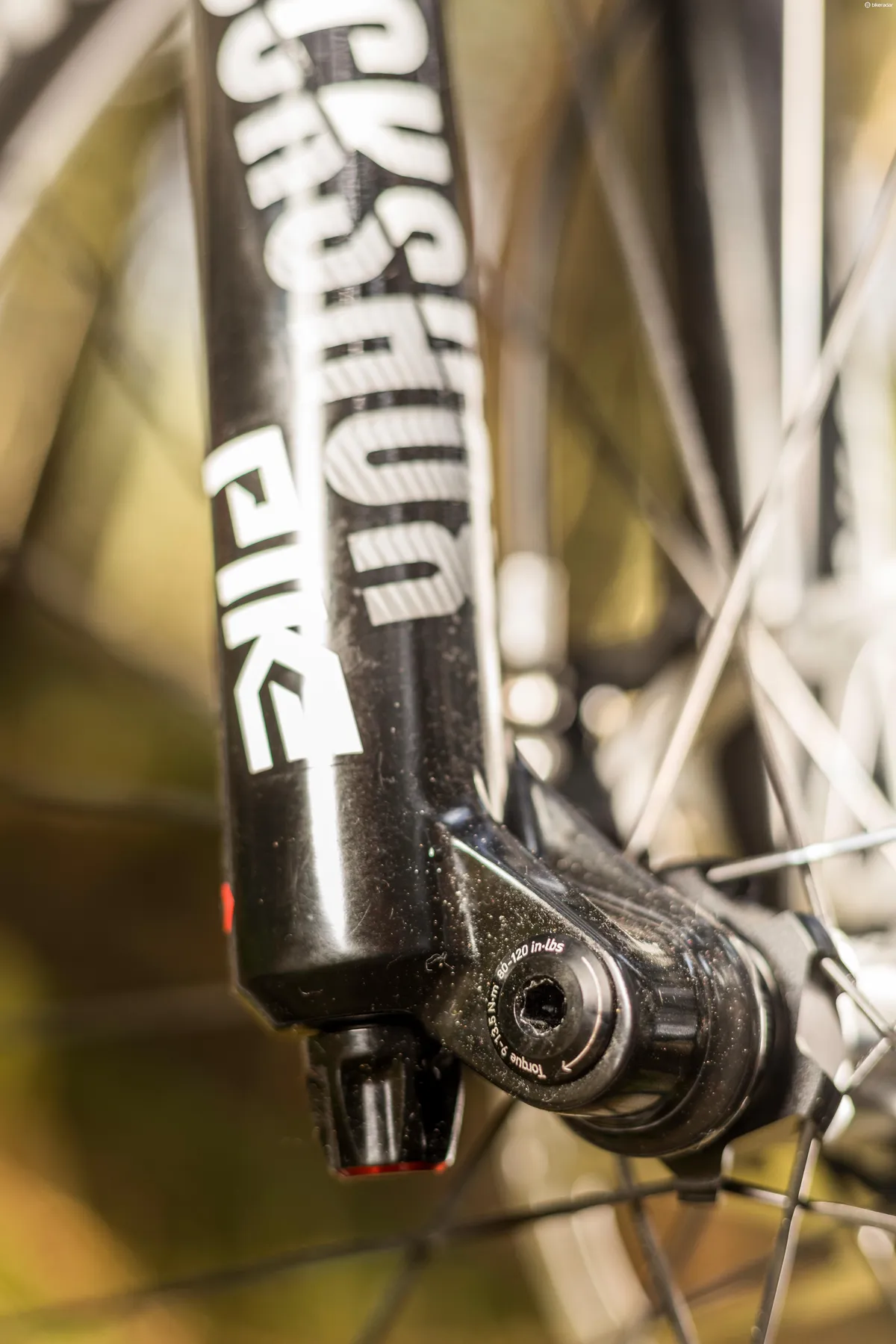It’s already been four years since RockShox unveiled the Pike fork that we recognise today. In that time, it’s won more than its fair share of accolades and for many, it’s set the bar when it comes to what you should be bolting to the front of your trail bike.
- RockShox 2018: New Pike, Revelation and Lyrik forks
- Mountain bike groupsets: everything you need to know
- How to set up the suspension on your mountain bike
But since relaunching the overhauled Lyrik back in 2015, the Pike’s position in the market has caused some confusion and is something RockShox was keen to address for 2018.We met the guys from RockShox over in the sunny Forest of Dean to find out just what the future holds for one of the most favoured trail forks out there, and just what it feels like in the hills.
Time for a diet
When it was released, the Lyrik offered a boost in performance for just a little extra weight. Why not slap a Lyrik on instead of a Pike, then? That appeared to be the question quite a few bike manufacturers began to ask, and something that needed addressing by RockShox. But, what exactly did Pike need to be? Up until this point, Pike had been used for a wide variety of things, spanning the categories from dirt jump to enduro, as it seemed to be good at most things. But once the new Lyrik arrived, it was clear that a little more focus wouldn’t do the Pike any harm.

“That new Lyrik we launched was designed for what people do with long travel bikes today, but that kinda allowed us to refocus on what we want Pike to do in our line-up – to think 'What do we want to make?'” says Jon Cancellier, RockShox product manager. The answer was, quite simply, “We need a really awesome trail fork,” he continues.Cast an eye at any of the new Pike specs and you’ll soon spot that the new fork comes with a 15x110mm axle only. That’s right, Boost only. Over the course of a year, the guys at RockShox set about designing the new Pike chassis with the plan to reduce overall weight but maintain the same level of stiffness that Pike had always been commended for. While the 35mm upper legs stay the same, switching to a single lower leg dimension meant there were fewer constraints and issues to design around. By designing the new lower legs to work with Boost axle spacing from the get-go, the engineers were able to fully optimise the crown shaping, the brace and the lower legs from the start. There was no “stretching” necessary, which helped to avoid any kind of compromise along the way.
Working to just one axle standard is, according to Cancellier, one of the main contributing factors in how they’ve managed to shave 150g off compared to the old Pike fork (Boost equivalent).Critically, this reduction in weight doesn’t affect the new fork in terms of stiffness.
The Pike’s upper tubes – like that of its bigger travel counterpart, the Lyrik – do get beefed up a little internally, so will now only accept the smaller diameter grey Bottomless Tokens from 2018 onwards.
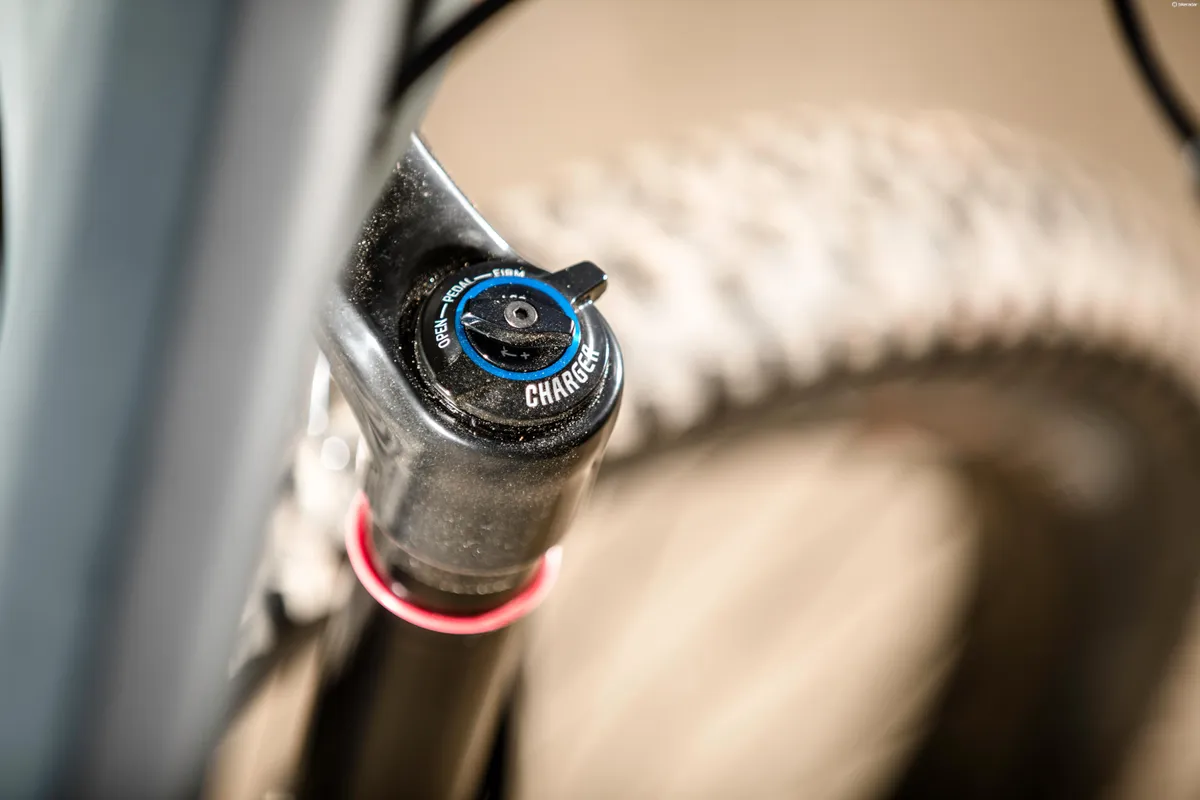
The complete shift to the wider axle standard also comes with other benefits. With tyres and rims seemingly getting wider, it made sense to ensure the Pike had maximum tyre and mud clearance to fit the fattest rubber possible. The revised 27.5in Pike will now be able to fit a 27.5x2.8in tyre. That’s a plus-sized tyre in a 27.5in, not 29in, fork. In fact, the 29in version of the fork will be able to host a 27.5x3in tyre should you want to go really wide. Even with these fatter tyres in place, there’s still enough clearance to fit a mud guard inside the fork arch.“That philosophy of designing around a 2.8in tyre does have some benefits on the bike manufacturing side of things. The 27.5in fork is 20mm shorter axle to crown than a 29er fork. If they want to use a 2.8in tyre they can just use a 27.5in fork and keep the front end of the bike low”, explains Cancellier.Other chassis changes include a new 180mm direct- post-mount brakes. That means a 180mm rotor is the smallest rotor you can now use with the new Pike.
Like the rest of the RockShox line-up, the new Pike comes ready to house SRAM Torque Caps. These larger diameter hub caps are claimed to improve the wheel/fork connection, which in turn ups stiffness levels.

There’s also a choice in axle type, too. You can go for the sleeker, more understated look with the Maxle Stealth, which requires a 6mm Allen key to fit it, or the Maxle Ultimate, which uses a quick release-style lever for tool-free wheel removal.
Middle ground
Naturally, the US brand wasn’t ever going to settle with changing just the chassis. The 2018 Pike gets the new DebonAir air spring – a name many will recognise from the company's rear shocks. Cancellier explains, “We started down this path with Lyrik. We increased the negative air volume to get that more coil-like ride. More small bump sensitivity, more mid-stroke support. With Pike I knew I wanted to go down that route, but I didn’t want to make a trail fork or lighter weight fork that rode like a big travel fork such as a Boxxer or Lyrik. We wanted something a little sportier, somewhere in the middle.” The new DebonAir spring curve used in the Pike sits it somewhere in the middle, between the old Pike and Lyrik. This means it has increased negative air volume over the old Pike, but not as much as the bigger travel Lyrik. According to Cancellier, “It has a couple of benefits. It gives you better small bump sensitivity because it has that additional negative air volume but adds mid-stroke support, so, deeper in the travel, the fork will ride higher. Basically, it's just trying to take the curve and flatten it out.”
In reality, this means the new Pike should feel easier to get moving through the beginning (0-50mm) of the stroke, and respond better when rolling over chattery surfaces. In the second half of the stroke (80-160mm) it should feel more supportive, and feel more like a coil shock.
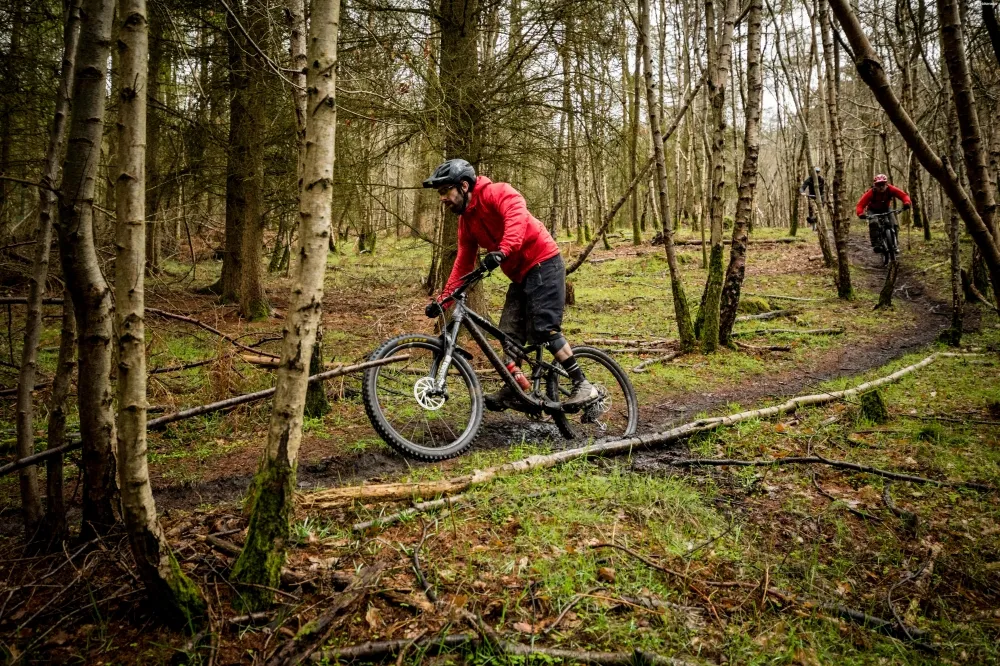
Another big focus for the RockShox team was to improve the accuracy of the air spring chart, which is used as a guide when setting the fork up. The old Pike was designed to be a 160mm travel 26in fork, and this is where all of the air spring volumes were derived from. As RockShox started to add more Pike options with fewer travel options or to fit bigger wheel sizes, it needed to add Bottomless Tokens to compensate for the volume differences inside the castings. The new Pike has the same volume inside the casting in both 27.5in and 29in offerings. This simplifies things and should make setting up that bit more straightforward.Which travel fork you have will dictate the number of tokens that come as standard. The 160mm travel fork has no tokens inside, but every time you reduce travel by 10mm, RockShox has added a token.If you like travel adjust, don’t panic, the Pike will come in a Dual Position Air spring option, too.
Charged up
While the famed Charger damper continues to win praise throughout the cycling media, RockShox was keen to improve upon it. After two years of hard graft, the Charger 2 damper is the result, and was first used in the recently overhauled SID.
“It’s the same basic concept as the Charger you know today, but we’re doing things a little bit differently,” says Cancellier. ”The main goal behind the damper was knowing that I wanted to have remote options.”
The new Pike (and Lyrik) will come in the familiar RCT3 and RC versions, alongside the new RCT Remote and RC Remote options for an extra fee. Of course to add remote options meant some changes to the Charger’s design. In its current guise, the large dial used to toggle between the three modes (open, pedal and lock) takes quite a bit of force to turn and simply wouldn’t work with a remote.
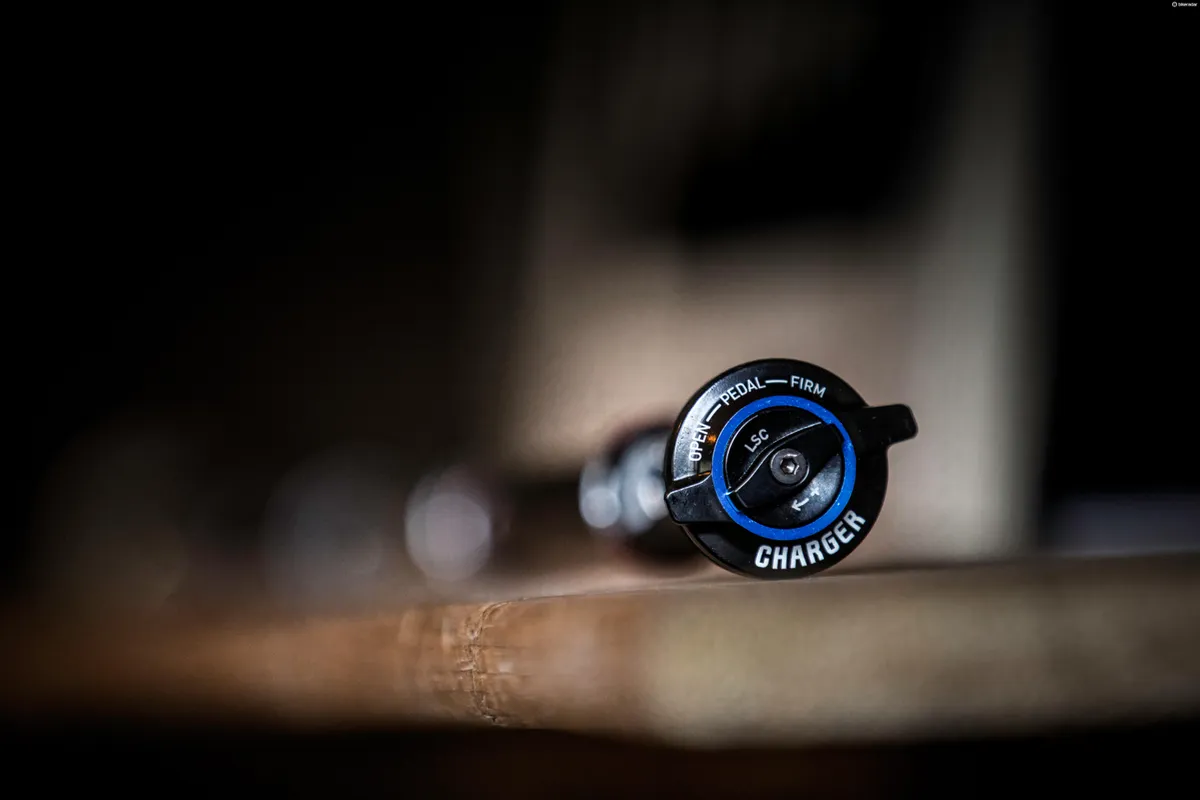
Now, when you toggle the dial into ‘lock’, now referred to as ‘firm’ mode, a revised oil path means it’s the oil pressure actually creating the lock out force required to prevent your fork from moving, not a spring, meaning the effort to actuate the ‘firm’ mode is dramatically reduced and now totally remote-friendly. Why's it called ‘firm’? “You’re riding longer travel bikes, you don’t really need to have that super stiff, rock hard lock out. It’s supposed to give you a firm platform to climb a road but I wanted it usable, still” says Cancellier.Thanks in part to a reshaped low-speed compression needle, there’s now an even wider range of low speed compression adjustment in the ‘open’ mode with the same number of clicks as before. RockShox also claims that the ‘pedal’ mode is now more usable and feels more like the mid-mode found on its shocks – ideal for mellower trails where you need to work the bike harder to maintain momentum.Interestingly, it’s not just the top flight RCT3-equipped forks that have had all of the attention. Thankfully, RockShox has taken some time to work on the RC version of the damper, which now gets far more refined low speed compression adjustment compared to its predecessor.
In terms of maximum travel, the 27.5in Pike will be available in 120mm through to 160mm travel, in 10mm increments. The 29in version of the fork will be available in 120mm to 140mm travel options.
Capping things off
The keen-eyed among you will have spotted the new dials atop each leg, which are now much lower and neater. Why? It’s all about clearance. Lower profile dials mean more downtube clearance, which is something bike brands are constantly battling with now we’re all riding bigger wheels.
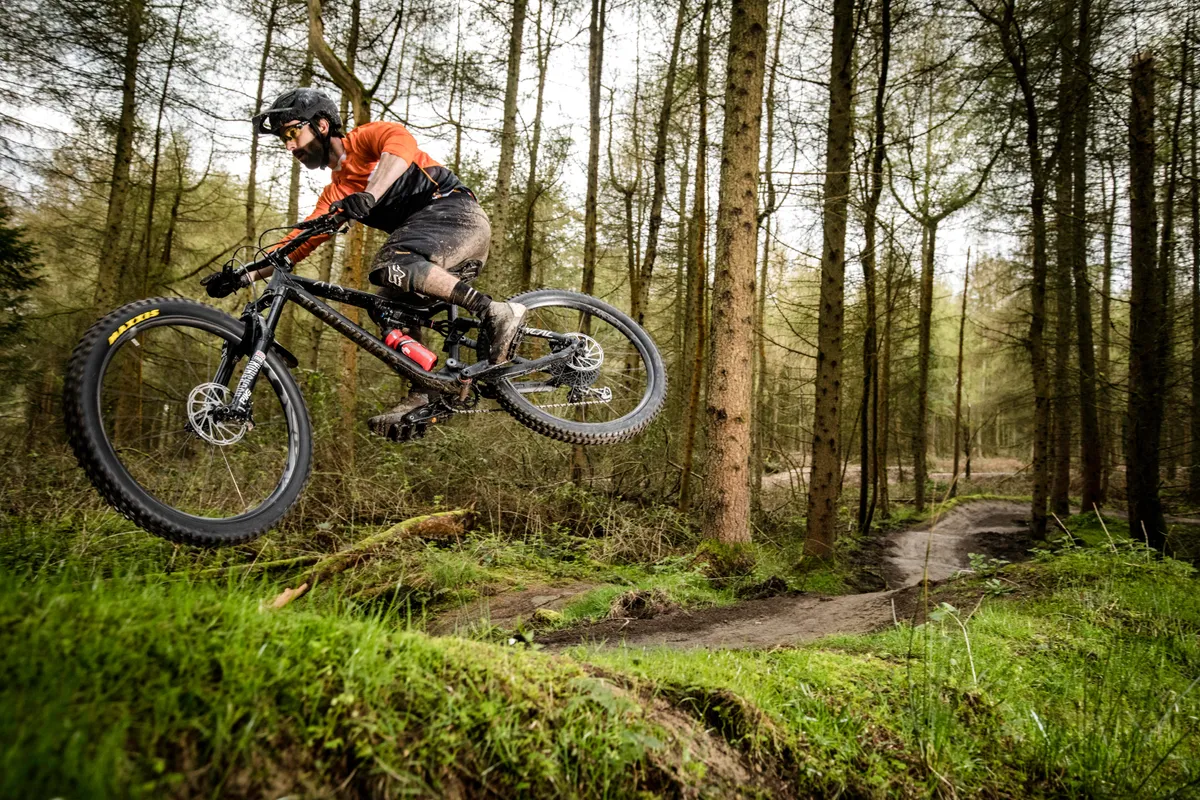
To do this, in part at least, the new Pike uses a cassette tool to remove the air spring cap and damper. Just like the revitalised SID launched last year, this enables RockShox to sink the tool interface flush with the top of the fork and reduce dial height drastically.
Pricing
The Pike RCT3 and RCT Remote costs £825-£940 / $875-$1000.
First ride impressions
Our short two days riding aboard the new Pike fork was, usefully, on trails we're very familiar with. While the weather might not have been exactly great, the trails, for the most part at least, were still running pretty well and offered a nice variety of wet root, slippery cambers and some seriously unforgiving landings.
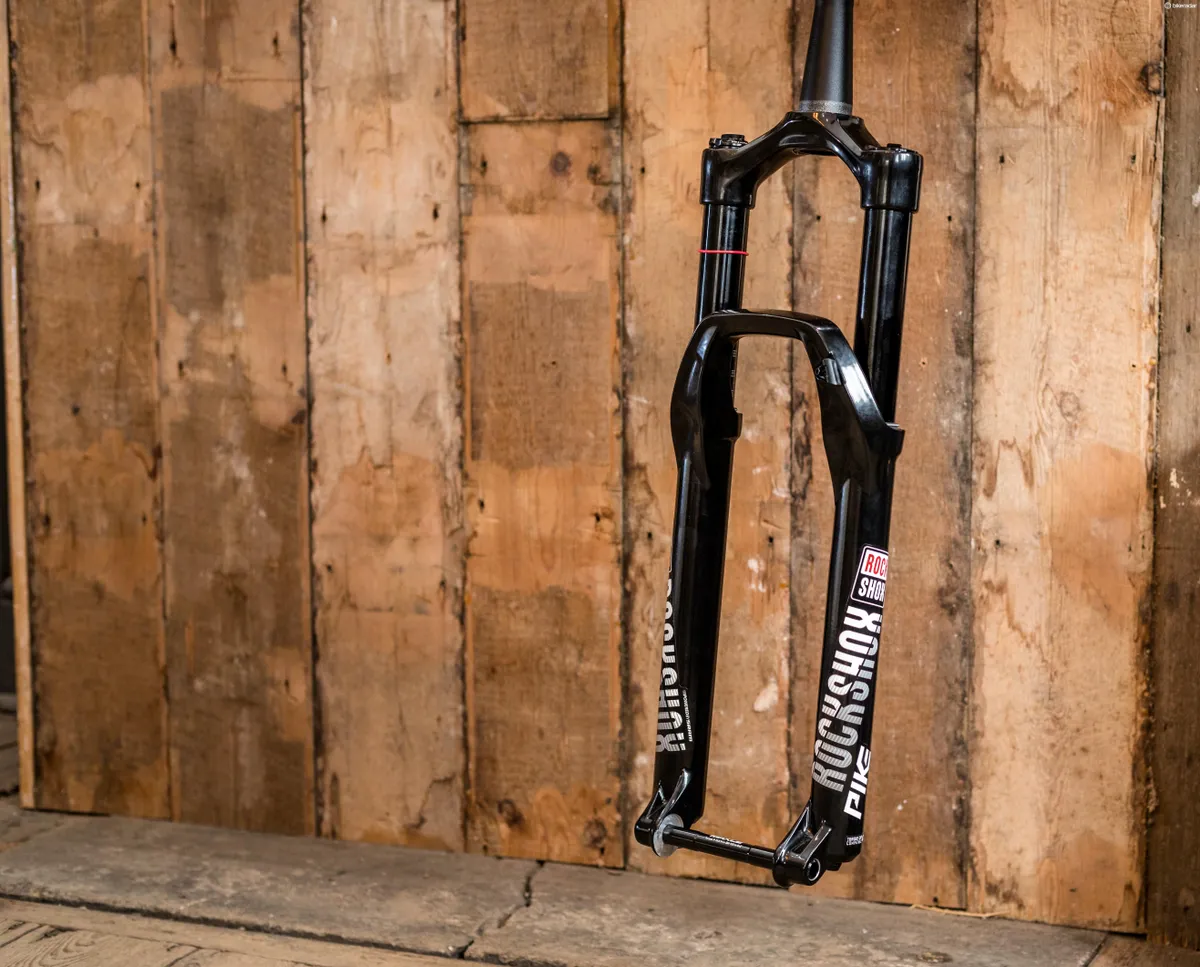
A quick roll down a battered, braking bump-riddled trail centre descent certainly highlighted just how forgiving the new fork was. Through the constant chatter, the Pike managed to soak up all but the worst of the vibrations before they reached the bar, which felt like an obvious improvement over its predecessor.
As the terrain became more technical and the hits harder, the improvements – in particular the revamped air spring – felt more noticeable. At no point did it feel like the Pike lacked sensitivity when tackling slippery root-riddled sections. Nor was it necessary to add more air pressure to increase support when sliding into steeper, high load turns. I did stray slightly from the pressure chart, adding 5psi more than recommended as well as adding three clicks of low-speed compression adjustment. This resulted in a fork I felt confident thumping into bumps and slapping in flat landings.
Of course I’ve not tried it back to back with the fork it’s replacing, but as soon as we get our test sample, that’s exactly what I’ll be doing. So stay tuned for a full review in the not too distant future.
Check out our First Ride video of the new Pike

